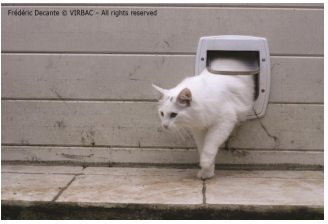Assessment of water intake and urine volume in cats fed a new high-protein high-sodium dry diet

Introduction
Environmental enrichment and stress reduction are common recommendations to help manage clinical cases of feline idiopathic cystitis (FIC). Dietary manipulation is also commonly recommended, typically aiming to increase water intake, resulting in production of an increased volume of more diluted urine.
Animals, materials and methods
Eight healthy European adult neutered cats (4 males and 4 females, mean age 4.4±0.3 years, mean body weight 4.8±1.2 kg) normally fed dry diets were included in the study. The study used a cross-over design with a test diet and a control (commercial urinary) diet, each being fed for 3 weeks. The 2 diets had different formulas in terms of ingredients and analytical constituents.
The study focused on 2 main nutrients known to increase water intake in cats: protein and sodium, with the test diet having higher protein and sodium contents compared with the control diet (Table 1). Daily rations were calculated to maintain the cats’ body weights. After a 1-week diet transition, the cats were housed in single metabolism cages, and daily food consumption, water intake and urine volume were measured for each cat. Wilcoxon signed rank tests were performed to compare the different parameters between the 2 groups, with a 5 % significance level.
Results
Palatability and digestive tolerance were good with both diets and the cats’ body weights remained stable. The test diet resulted in significantly higher values for all the assessed parameters, in comparison with the control diet (Table 2, Figure 1 and Figure 2).
Download the complete study to see the table of results.
Conclusions
These preliminary results showed that this new diet, with high protein and high sodium contents, was effective in stimulating water intake and increasing urine volume in healthy cats. The next step will consist in testing the diet in cats with idiopathic cystitis.

